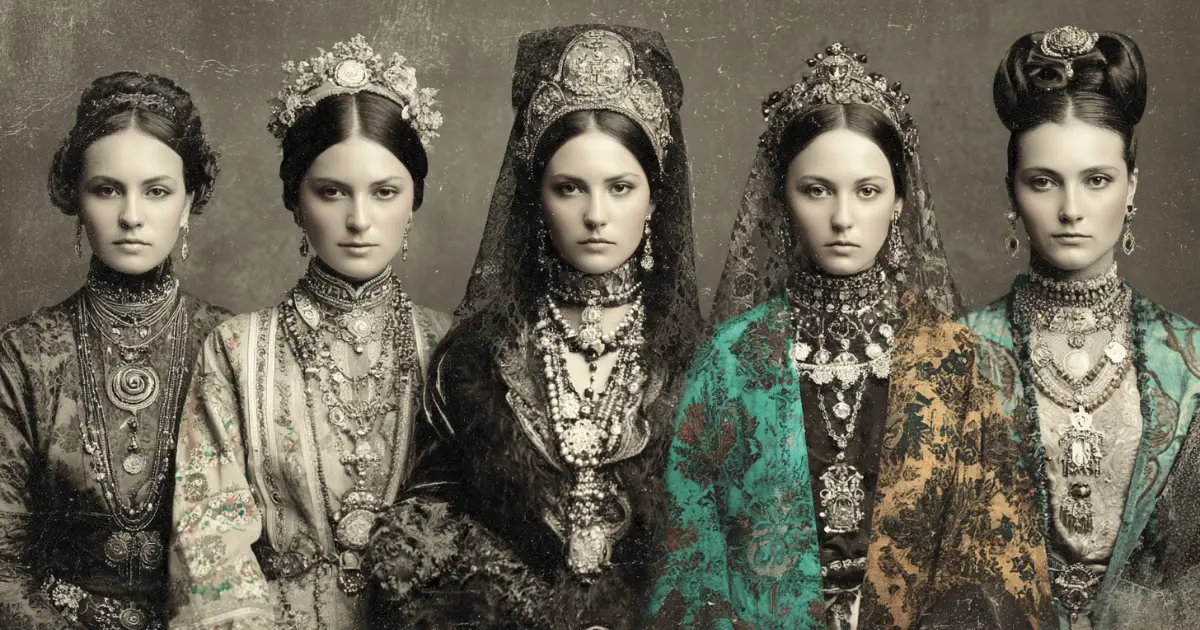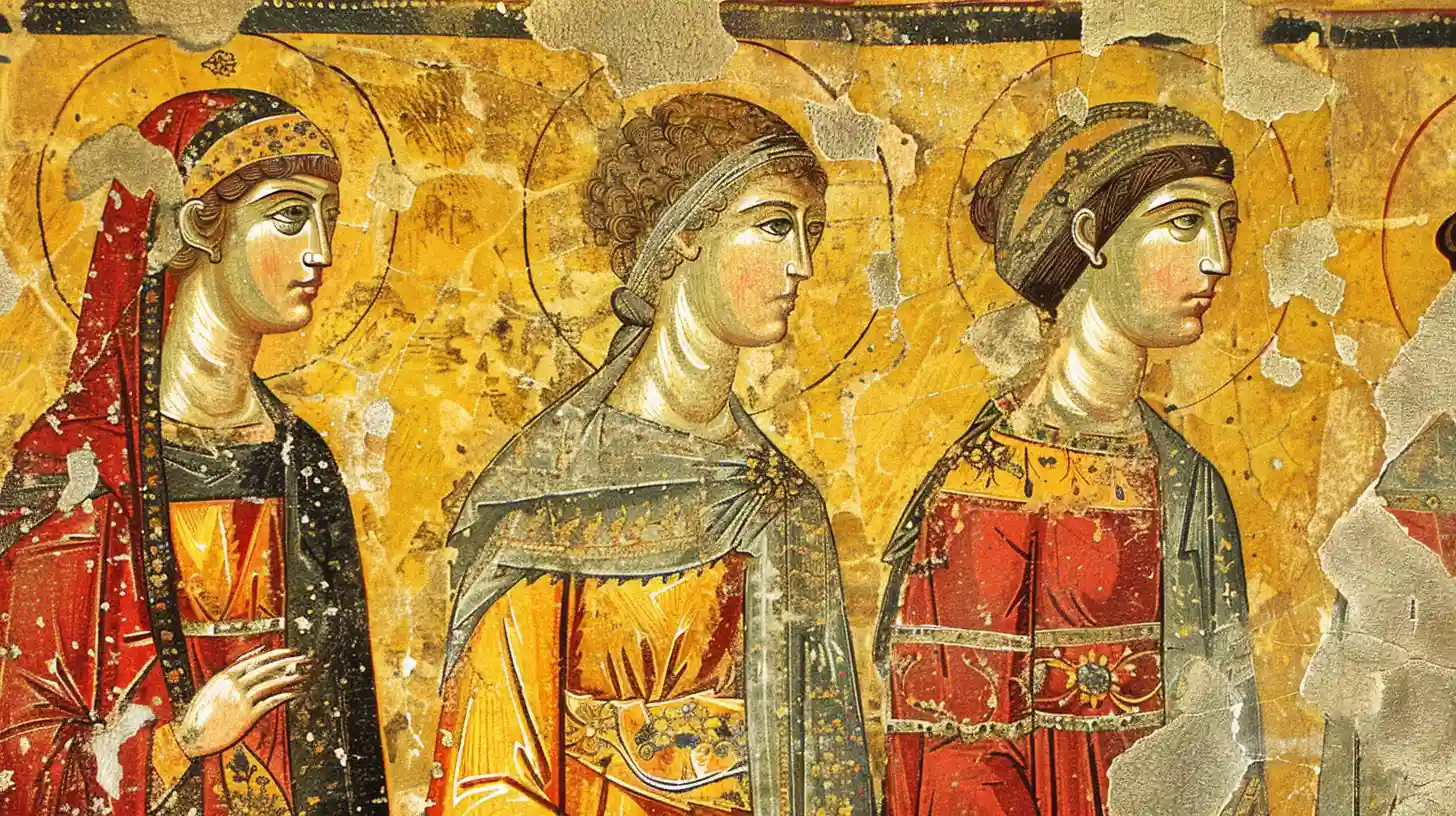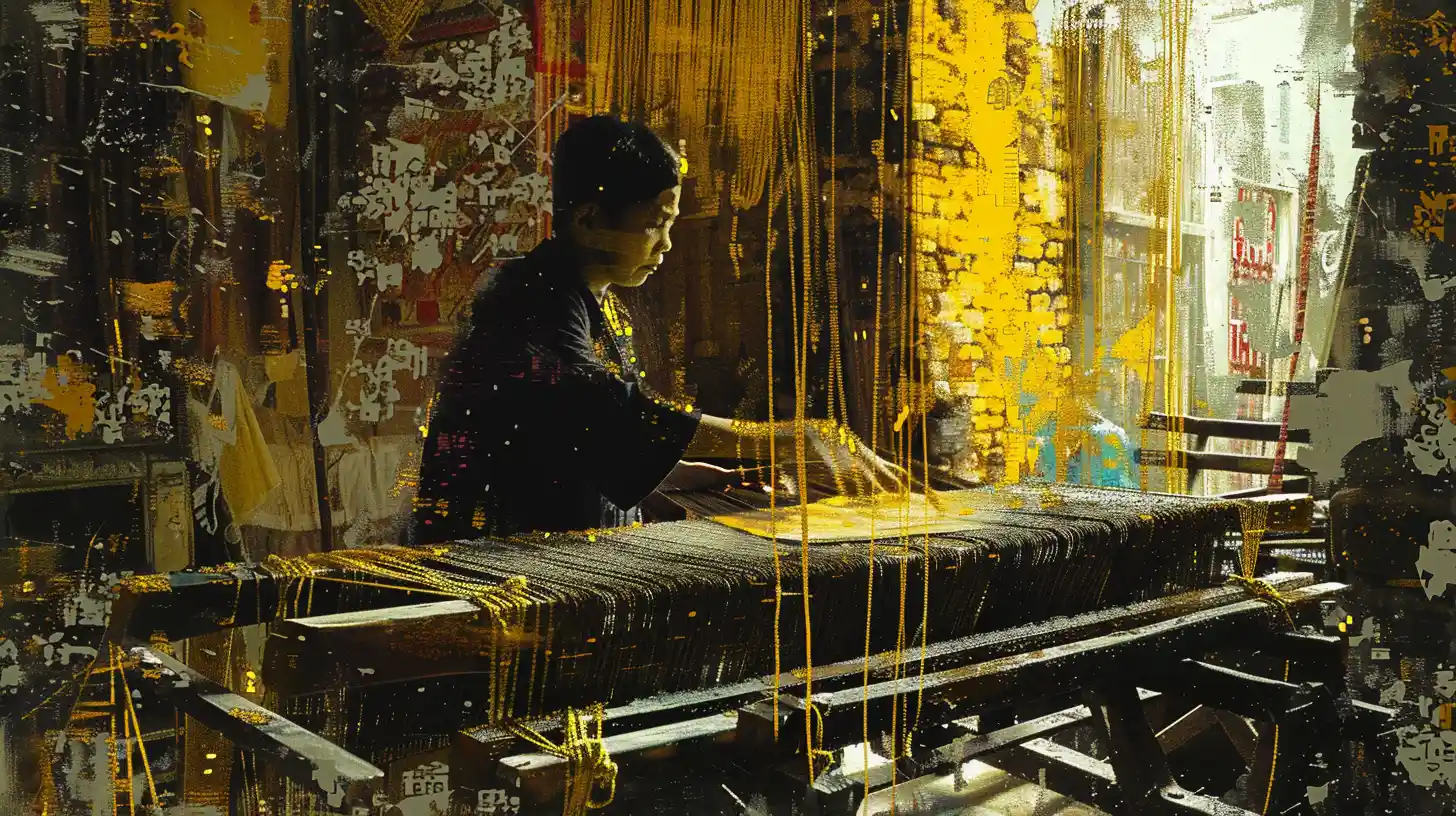
© History Oasis
The influence of the East and Middle East on Byzantine fashion was a result of the empire's strategic location at the crossroads of trade routes between Europe and Asia.
As a hub for international commerce, Constantinople, the capital of the Byzantine Empire, attracted merchants from distant lands who introduced exotic fabrics, vibrant colors, and intricate patterns to the Byzantine market.
The Byzantines, known for their appreciation of luxury and aesthetics, eagerly embraced these foreign elements, incorporating them into their own clothing styles and textile production, creating a unique fusion of Eastern and Western fashion sensibilities.

The T-shaped tunic formed the foundation of Byzantine clothing for men and children, its simple yet versatile design reflecting the influence of Eastern fashion on the empire's dress customs.
Women wore a similar garment, known as the tunica, which was slightly longer in length to ensure modesty and adherence to Christian values.
The adoption of these basic, T-shaped garments as the primary form of dress in Byzantium can be traced back to the empire's close ties with the East, particularly its interactions with Persian and Arab cultures through trade, diplomacy, and conquest.

The Byzantines were renowned for their love of vibrant colors and intricate patterns.
They excelled in the creation of luxurious, richly patterned fabrics, particularly silk, which was highly prized and sought after by the upper echelons of Byzantine society.
The Byzantine textile industry also catered to the needs of the lower classes by producing resist-dyed and printed fabrics.

The high cost of clothing in the Byzantine Empire was a reflection of the value placed on textiles and the complex production processes involved.
Even the poor often had to make do with wearing the same garments repeatedly, as the cost of acquiring new clothing was prohibitively high for many.
In contrast, the wealthy had the means to purchase and maintain extensive wardrobes, but they often chose to reuse clothing even after death, passing down garments to family members or donating them to the church.

The upper classes in the Byzantine Empire used clothing as a means to display their wealth, status, and religious devotion.
They adorned their garments with intricate iconography and biblical scenes, often embroidered or woven into the fabric using vibrant colors that mimicked the hues of precious gemstones, such as deep reds, rich blues, and emerald greens.
The color purple, however, was reserved exclusively for royalty, as it was derived from rare and expensive dye sources, making it a symbol of imperial power and prestige.

In the Byzantine Empire, clothing served as a powerful visual marker of an individual's identity, social status, rank, and gender.
Strict regulations governed the attire worn by different segments of society, ensuring that one's appearance accurately reflected their position within the complex social hierarchy.
Historians have gained valuable insights into the diverse range of clothing styles and accessories worn by various groups—from the imperial family and nobility to the clergy, military, and common people—through mosaics, frescoes, and illuminated manuscripts.

The influence of Christianity on Byzantine fashion was profound, as the faith's emphasis on modesty and humility shaped the design and styling of garments for both men and women.
Women's clothing, in particular, reflected these values, with longer tunics that covered most of the body and head coverings that concealed the hair, adhering to the Christian ideal of feminine modesty.
Men's fashion also incorporated elements of religious symbolism, such as the use of semi-circular cloaks reminiscent of the clergy's vestments and the incorporation of colored panels or embroidered designs that denoted the wearer's rank or position.

The sixth century marked a significant turning point in the history of Byzantine textile production, as technical advances in silk cultivation and weaving technologies enabled artisans to create fabrics of unprecedented quality and sophistication.
These innovations allowed for the incorporation of intricate, allover patterns and designs that covered the entire surface of the fabric, rather than being limited to borders or isolated motifs.
The increased level of detail and complexity in silk textiles from this period showcased the ingenuity and skill of Byzantine weavers, who were able to manipulate the delicate silk threads to create stunning visual effects.

In the Byzantine Empire, fashion encompassed not only clothing but also various accessories that served to enhance one's appearance and convey social status.
Jewelry played a significant role in Byzantine fashion, with earrings being among the most prized and widely worn accessories across different social classes.
The popularity of earrings can be attributed to their versatility, as they could be crafted from a range of materials, from precious metals and gemstones for the wealthy to more affordable options like glass and bronze for the lower classes.
The ubiquity of earrings in Byzantine fashion also reflects the empire's cultural and aesthetic values, which placed great emphasis on personal adornment as a means of expressing one's identity and social standing within the complex hierarchy of Byzantine society.